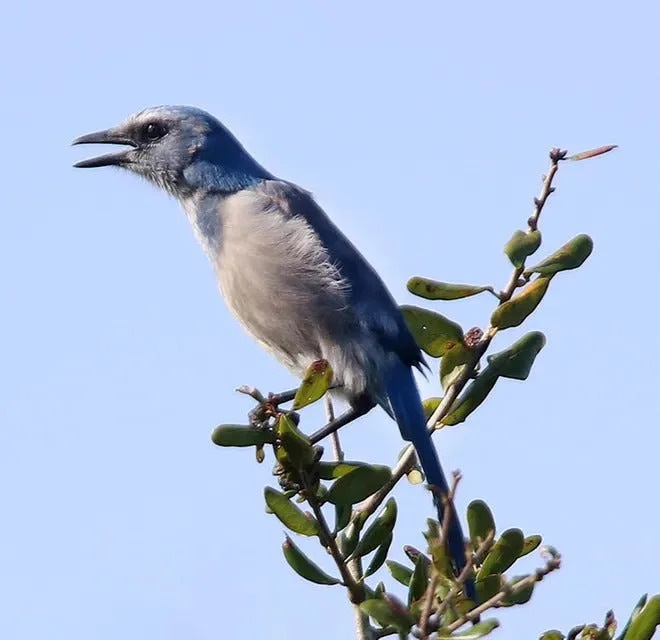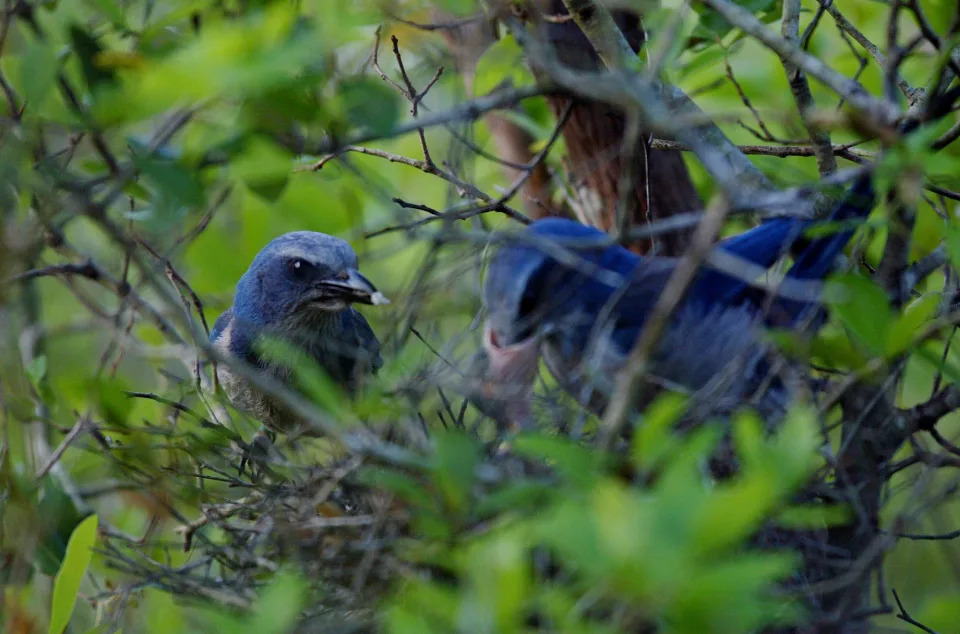Dinah Voyles Pulver, USA TODAY
Sun, May 21, 2023
If you enjoy watching cardinals or bluebirds at a feeder or seeing a great blue heron at the water's edge, it may not be immediately apparent but the nation's birds are under siege.
"Birds are declining," said Ken Rosenberg, a conservation biologist with Road to Recovery, an organization that focuses on recovery of the nation's most rapidly declining birds. "It's death by a million cuts."
They’re imperiled by habitat loss, disease and other threats. Several incidents this spring illustrate a few of the hazards.
In northern Arizona, at least 13 endangered California condors died after being infected by avian flu, and federal officials just approved an emergency vaccine.
In Florida in April, state wildlife officials charged two men with shooting and killing colorful, migratory cedar waxwings, including a blueberry farmer trying to keep them off his bushes.
Also in Florida, a man was charged with driving a golf cart into a flock of American black skimmers on the beach, killing five birds.

California condors are among the nation's most imperiled birds, but recovery actions have built their numbers back to more than 500 birds.
Scientists estimate more than 3 billion birds have been lost in the U.S. since 1970 and dozens of species are considered endangered, threatened or at risk. While extensive conservation efforts helped recover the condors, bald eagles and others, dangers remain for many species and climate change poses additional threats to habitats and food resources.
Here's what we know about bird species of greatest concern in the continental U.S.
Which bird species are most at risk?
It's hard to quantify which birds are most threatened, said Rodney Siegel, executive director of The Institute for Bird Populations. Is it a measure of population, habitat loss, rate of decline or something else?

A Florida scrub jay sits atop an oak at Blue Spring State Park in Orange City, Florida. The birds, endemic to Florida, are among the nation's most imperiled birds.
Below is a list of the birds found only in the U.S. that have the lowest populations, based on two sets of estimates kept by Partners in Flight, a network of 150 organizations in the Western Hemisphere, and a list of most imperiled birds from the American Bird Conservancy.
California condor: Largest and rarest, with an estimated 561 in 2022, including 347 birds in the wild, according to the U.S. Fish and Wildlife Service.
Whooping crane: From fewer than two dozen whooping cranes in the 1940s, conservation measures have helped build the population to just under 1,000 cranes.
Island scrub-jay: Found only on Santa Cruz Island off California, these birds have the smallest range. Once numbering more than 12,000, its population is an estimated 2,300 but recovering.
Florida scrub-jay: It has vanished from 10 Florida counties and its habitat is fragmented. Available population estimates vary widely from 7,500 to 11,000. It thrives in the Ocala National Forest where conservation efforts have protected large areas of its habitat.
Gunnison sage-grouse: This bird disappeared from roughly 90% of its range and is found in only 14 counties in Colorado and Utah. An estimated 4,800 remain, according to Partners in Flight data.
Kirtland’s warbler: On the endangered species list for 47 years before being delisted in 2019, it's "a success story," said Nicole Michel, quantitative science director for National Audubon Society. "But we still need to keep working to protect them." Estimated at 4,800, the nation's rarest songbird is found almost exclusively in stands of young Jack pine in Michigan, Wisconsin and Ontario.
Cassia crossbill: These relatives of the red crossbill were named a separate species in 2017. Fewer than 5,800 remain, found only in Idaho's South Hills and Albion mountains, according to the Cornell Lab of Ornithology.
Piping plover: With an estimated population of 8,400, its greatest threat is human activity, Michel said. People walking or playing on the beach where the birds nest on bare sand, or letting dogs run loose, can harm the birds and scare them off their nests.

A Florida scrub jay feeds a chick in the nest at Lyonia Preserve in Deltona, Florida. The jay, found only in Florida, is considered one of the most imperiled birds in the U.S.
Which other species are at a tipping point?
An estimated 104 species are at greatest threat, according to Road to Recovery, an independently funded organization to collaborate and focus on recovery of the most rapidly declining birds.
Rosenberg was lead author on the study that identified the loss of at least 3 billion birds, and Road to Recovery grew out of that effort. The group created three "alert" lists – red, orange and yellow – to target the cause of decline and develop recovery strategies.
Why are birds declining?
While general threats ‒ such as habitat loss, invasive species and human activities ‒ are broadly understood, many birds continue to decline without scientists being able to identify a specific cause despite decades of research and conservation, according to Road to Recovery.
"A lot of things point to agricultural practices, and the intensifying of agriculture," Rosenberg said.
Many fragments of native prairie and native grasslands important to birds have been cleared, he said. "Not too long ago, there were hedgerows and fallow fields, just sort of enough to sustain birds around the edges. Now it's just all gone."

A juvenile whooping crane takes flight on the Chassahowitzka National Wildlife Refuge in Homosassa, Florida on March 4, 2010. Adult whooping cranes are nearly 5 feet tall.
Birds with very restricted ranges, such as the Kirtland's warbler, are inherently at risk, Siegel said. “Natural disasters and disease outbreaks could take out that population much more easily than a species that is more widely distributed."
Without more successful efforts to identify why birds die and address those losses, scientists said many birds are on a trajectory that could lead to extinction..
Birds now considered extinct
At least seven birds once found in the U.S. are believed to be extinct. The status of an eighth, the ivory-billed woodpecker, is debated. They are:
Bachman’s warbler
Dusky seaside sparrow
Passenger pigeon
Carolina parakeet
Eskimo curlew
Great auk
Labrador duck
Search for the ivory-billed woodpecker
The status of the ivory-billed woodpecker – once referred to as the "Lord God bird" for its impressive stature and appearance – remains controversial. While federal officials proposed it be listed as extinct, a group of believers insist the bird is still present deep in Southern swamps.
A study released May 18 presented evidence that researchers said indicates the birds remain in unnamed Louisiana swamps, but The Associated Press reported some experts refuted the new evidence.
Latest news: Videos show purported ivory-billed woodpeckers as US moves toward extinction decision
How is climate change affecting birds?
Nearly three-fourths of the nation's birds are vulnerable to losing large parts of their range as the climate changes and sea levels rise, on top of the other threats they face, Michel said.
"It's a force magnifier," she said.
Why birds matter
"It's not just about the birds," Rosenberg said. It's a broader message. "If we're seeing the common birds around us declining, it's telling us that the health of our environment is also."
This article originally appeared on USA TODAY: US endangered birds include whooping crane, condor, scrub-jays: List
No comments:
Post a Comment